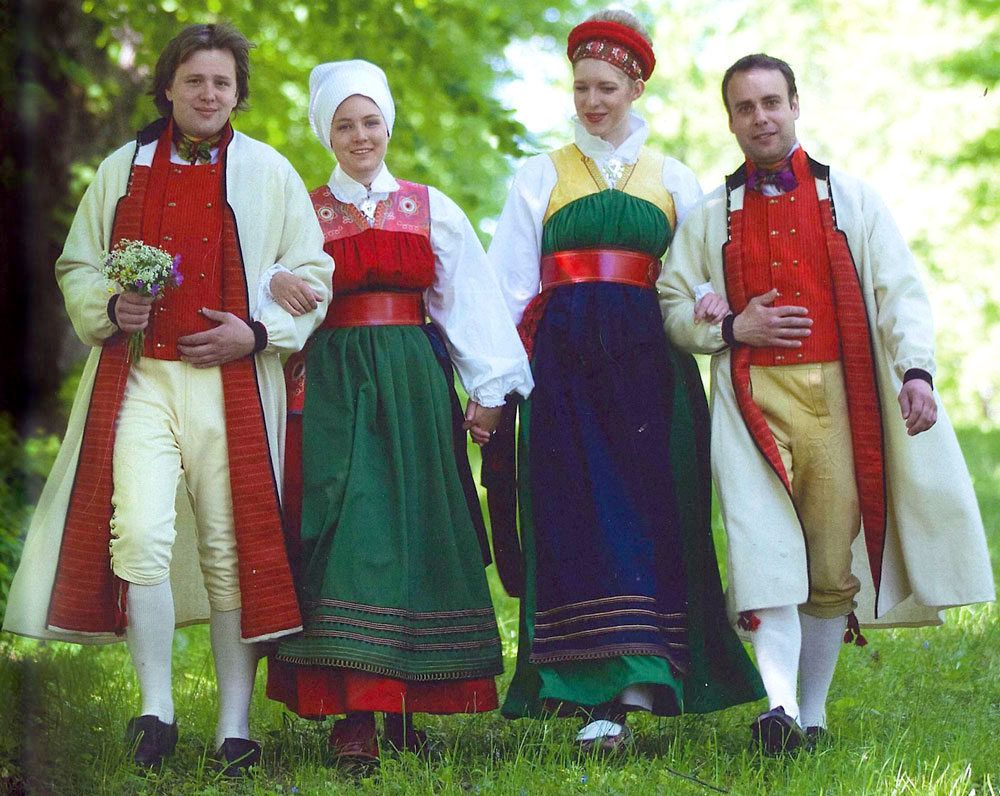- Startpage
- In English
- The Inventory
- Folk costumes
Folk costumes
Folk costumes as a symbol of local and national identity has been used in Sweden for around 400 years.
Location: Nation wide

Photo: Laila Durán.
Historically, they were often worn every day and it is only more recently that they have been used as festive attire. Folk costumes are characterised by old-fashioned stylistic features and the knowledge has been passed down from generation to generation in the place where the costume has been developed. The origins of the costume are thus connected to a certain place or area where uniform dress has been the norm. During industrialisation, their use declined and they were instead used as festive attire with only few variations.
Today the tradition of wearing a folk costume is primarily linked to local heritage societies, the folk dance movement and individuals, and the costume is mainly worn at formal events and on special holidays. Folk costume can now be worn by anyone and is generally considered a symbol of local and national identity, as well as a means by which to communicate cultural heritage and old craft traditions. The tradition is strongest in areas such as Dalarna, Hälsingland and Skåne, as well as several smaller areas. There are also people in the major cities that like to wear folk costume.
Knowledge is now mainly spread through local heritage societies and the folk dance movement but also through various study circles that teach the craft using old methods and arrange seminars and conferences. There are also online groups where folk costumes are discussed and sold and where knowledge is shared. The arts and crafts movement, Svenska Folkdansringen, regional museums, Nordiska museet and Skansen pass on knowledge through exhibitions, costume rentals and by publishing books.
